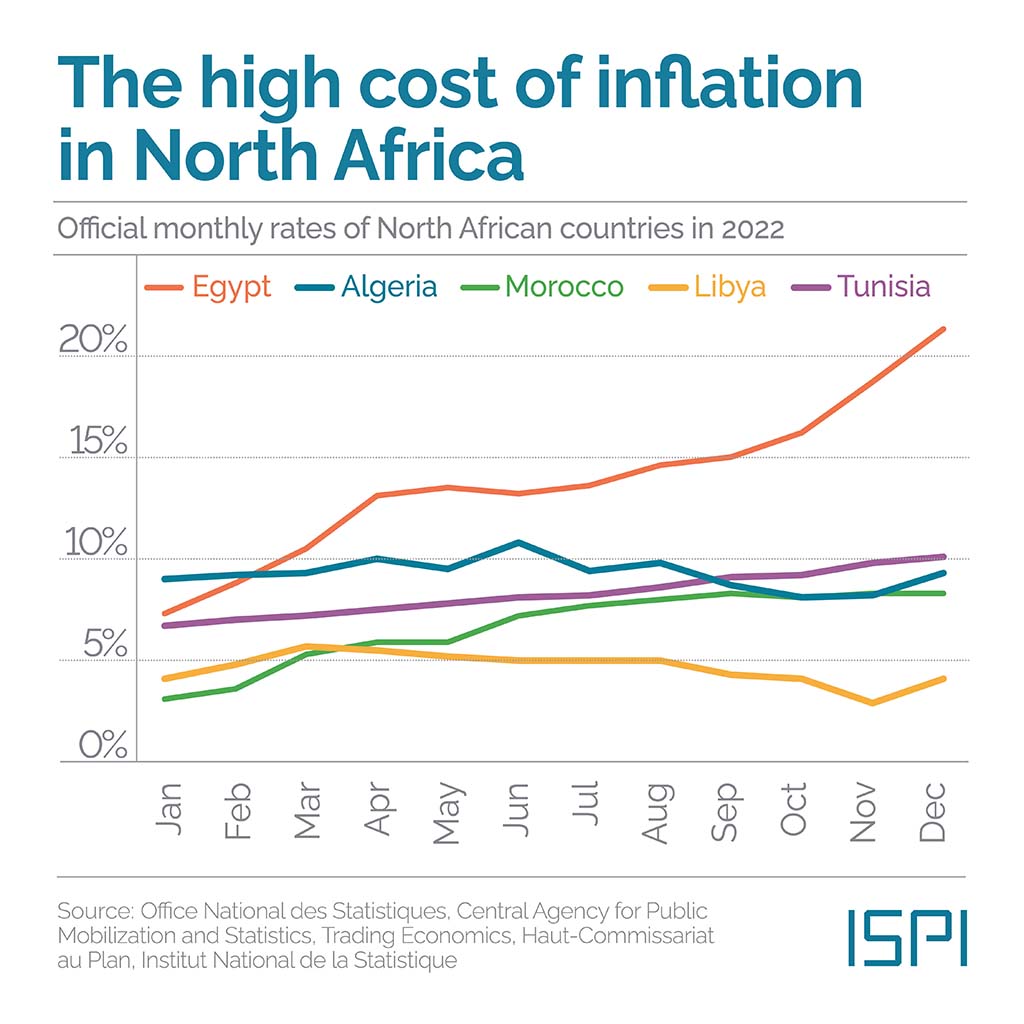Report on Social Security Disbursements and Alignment with Sustainable Development Goals
The United States Social Security Administration (SSA) is currently executing its monthly payment distribution to over 70 million Americans. This process is a critical component of the nation’s social protection system, directly supporting the achievement of several United Nations Sustainable Development Goals (SDGs), particularly those focused on poverty, health, inequality, and institutional strength.
Analysis of Payment Distribution and its Impact on SDG 1 (No Poverty) and SDG 10 (Reduced Inequalities)
The distribution of benefits, which can amount to as much as $5,108 for some recipients, is a primary mechanism for poverty alleviation and the reduction of economic inequality. These payments provide a crucial financial safety net, directly contributing to SDG 1 (No Poverty) by ensuring a baseline income for retired individuals, persons with disabilities, and survivors. By providing essential income support to vulnerable populations, the system also addresses SDG 10 (Reduced Inequalities).
Disbursement Schedule for July
To manage the logistical scale of the operation, the SSA has staggered the payments across three dates based on the recipient’s birth date:
- Birthdays from the 1st to the 10th: Payments were issued on the second Wednesday of the month (July 9).
- Birthdays from the 11th to the 20th: Payments are scheduled for the third Wednesday of the month (July 16).
- Birthdays from the 21st to the 31st: Payments will be issued on the fourth Wednesday of the month (July 23).
Institutional Integrity and its Relation to SDG 16 (Peace, Justice and Strong Institutions)
The reliability and efficiency of the SSA are fundamental to its role as a strong public institution, a key target of SDG 16. Recent concerns regarding potential budget cuts and administrative pressures highlight the challenges in maintaining this institutional integrity. The effective distribution of benefits is a core function that demonstrates institutional capability.
Operational Status and Concerns
- Staffing Pressures: Financial literacy instructor Alex Beene noted that the SSA is experiencing pressure from a reduced workforce, which could impact service delivery even if benefit distribution remains unaffected for now.
- Political Scrutiny: The system has been subject to political debate, with accusations of attempts to undermine its funding and operational capacity.
- Institutional Mandate: The SSA is responsible for distributing retirement, disability, and survivor benefits, which are vital social protections that citizens have contributed to throughout their working lives.
Broader Implications for SDG 3 (Good Health and Well-being)
The timely receipt of social security payments is intrinsically linked to SDG 3 (Good Health and Well-being). This financial support enables millions of Americans to afford healthcare, adequate nutrition, and stable housing, which are foundational social determinants of health.
Payment Assurance Protocols
To ensure recipient well-being and minimize financial distress, the SSA has established clear protocols for payment discrepancies. The agency advises beneficiaries to wait three business days before reporting a missing payment. This procedure provides a structured response mechanism, reducing uncertainty and supporting the financial and mental well-being of recipients, in line with the principles of SDG 3.
SDGs Addressed in the Article
-
SDG 1: No Poverty
- The article focuses on the distribution of social security payments, which are a critical social protection mechanism. These payments, including “retirement payments, as well as disability and survivor benefits,” provide a financial safety net for vulnerable populations, directly contributing to the goal of ending poverty in all its forms.
-
SDG 10: Reduced Inequalities
- Social security systems are designed to reduce income inequality by providing financial support to specific groups, such as the elderly and persons with disabilities. The article highlights the scale of this system, covering “more than 70 million Americans,” which is a key policy for promoting the economic inclusion of these groups and reducing overall inequality.
-
SDG 16: Peace, Justice and Strong Institutions
- The article discusses the Social Security Administration (SSA), a key government institution responsible for administering benefits. It touches upon concerns regarding the institution’s effectiveness and capacity due to potential budget cuts and staffing issues (“layoffs have meant more work to do for a smaller staff of employees”). This relates directly to the goal of having effective, accountable, and transparent institutions.
Specific SDG Targets Identified
-
Target 1.3: Implement nationally appropriate social protection systems and measures for all, including floors, and by 2030 achieve substantial coverage of the poor and the vulnerable.
- The article is entirely about the implementation of a national social protection system in the U.S. The mention of “retirement payments, as well as disability and survivor benefits” for “more than 70 million Americans” directly describes a system aimed at providing substantial coverage for vulnerable groups like the elderly and persons with disabilities.
-
Target 10.4: Adopt policies, especially fiscal, wage and social protection policies, and progressively achieve greater equality.
- The U.S. social security system is a prime example of a social protection policy discussed in this target. The article highlights its importance and the political and fiscal debates surrounding it, such as accusations of “taking a hatchet” to the system, which underscores its role as a tool for achieving greater equality.
-
Target 16.6: Develop effective, accountable and transparent institutions at all levels.
- The article’s focus on the SSA’s operational capacity connects to this target. Concerns that “future payments could be delayed” due to staffing pressures and the public’s expectation of reliable service (“Few Americans will tolerate missed payments”) point to the need for the SSA to be an effective and accountable institution.
Indicators for Measuring Progress
-
Indicator 1.3.1: Proportion of population covered by social protection floors/systems, by sex, distinguishing children, unemployed persons, older persons, persons with disabilities, pregnant women, newborns, work-injury victims and the poor and the vulnerable.
- The article provides data that can be used for this indicator. It states that the SSA issues payments to “more than 70 million Americans,” and specifies that these funds cover retirees (older persons) and provide “disability and survivor benefits” (persons with disabilities and the vulnerable). This number represents a direct measure of the population covered by this social protection system.
-
Indicator 10.4.1: Labour share of GDP, comprising wages and social protection transfers.
- The article implies this indicator by discussing the monetary value of the social security payments. The mention of some recipients expecting “up to $5,108” and the vast number of beneficiaries points to the significant financial scale of these social protection transfers, which are a component of this indicator.
-
Indicator 16.6.2: Proportion of the population satisfied with their last experience of public services.
- This indicator is implied in the concerns raised about the SSA’s performance. The quote from Alex Beene about potential “slower customer service” and the fact that “Few Americans will tolerate missed payments” suggests that the timeliness of payments and quality of customer service are key measures of public satisfaction with the SSA. The agency’s own guidance to “wait three working days before contacting the SSA” about a missed payment is a metric related to service delivery standards and user experience.
Summary Table of SDGs, Targets, and Indicators
| SDGs | Targets | Indicators |
|---|---|---|
| SDG 1: No Poverty | 1.3: Implement nationally appropriate social protection systems and measures for all…and achieve substantial coverage of the poor and the vulnerable. | 1.3.1: The article mentions “more than 70 million Americans” receive benefits, including retirement, disability, and survivor payments, which measures the proportion of the population covered by the social protection system. |
| SDG 10: Reduced Inequalities | 10.4: Adopt policies, especially fiscal, wage and social protection policies, and progressively achieve greater equality. | 10.4.1: The article’s discussion of large-scale payments (“up to $5,108” for millions) implies the significant value of social protection transfers, a key component of this indicator. |
| SDG 16: Peace, Justice and Strong Institutions | 16.6: Develop effective, accountable and transparent institutions at all levels. | 16.6.2: Concerns about “slower customer service” and potential “delayed” payments imply that public satisfaction and timely service delivery are key measures of the SSA’s institutional effectiveness. |
Source: newsweek.com







